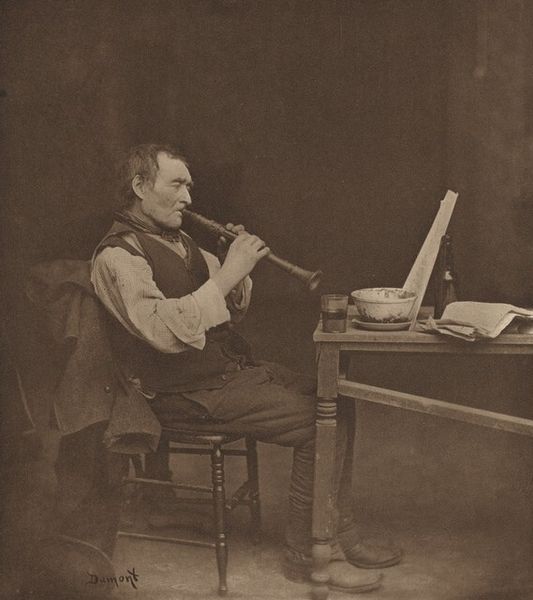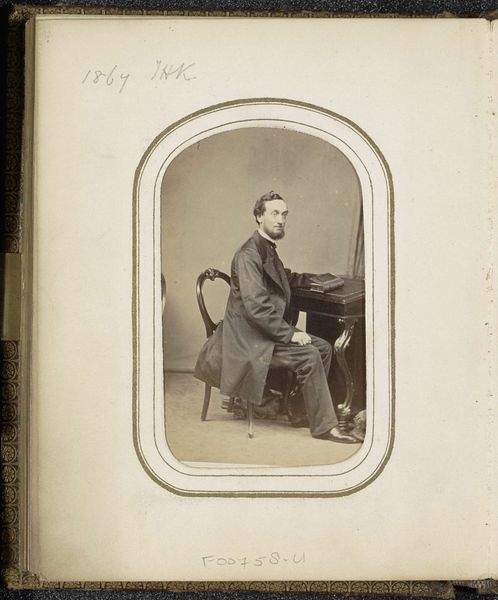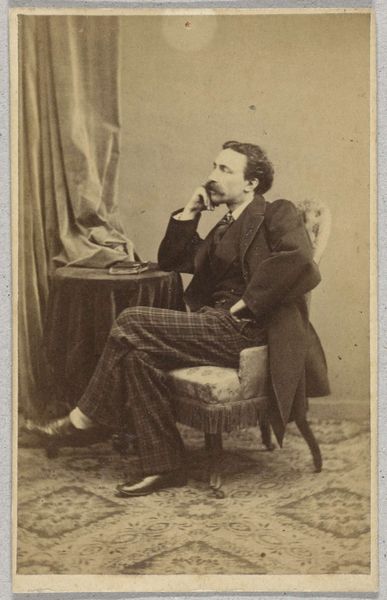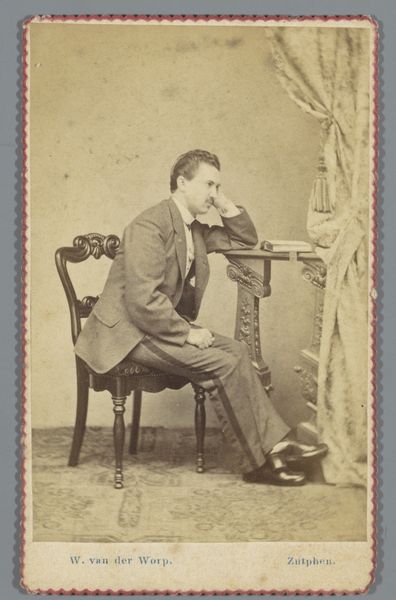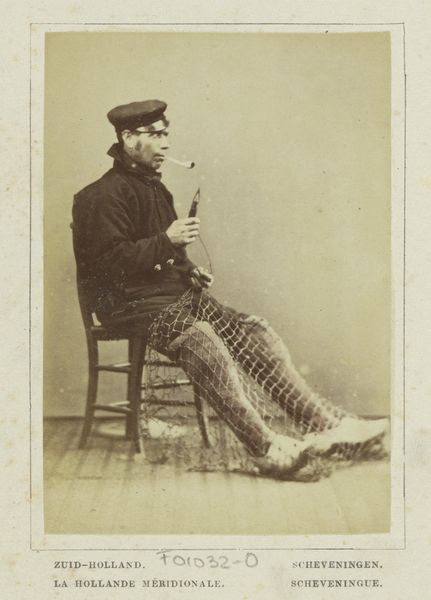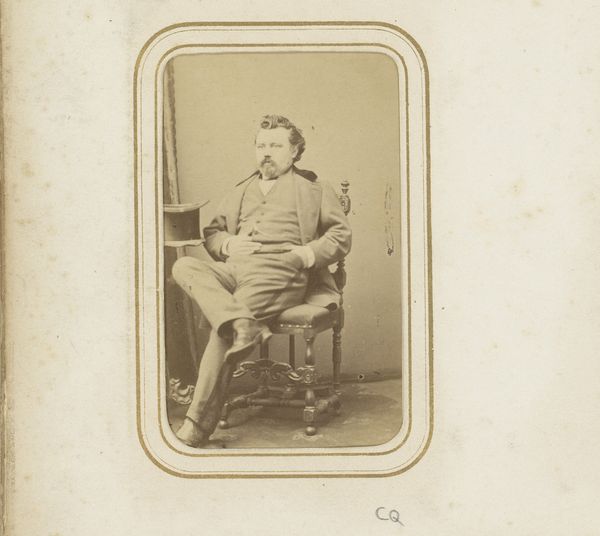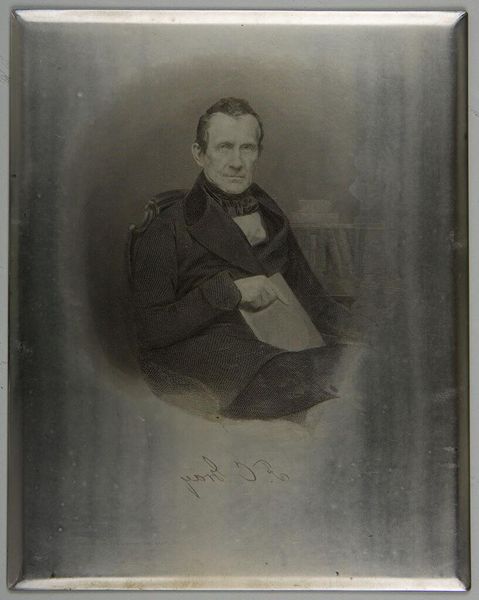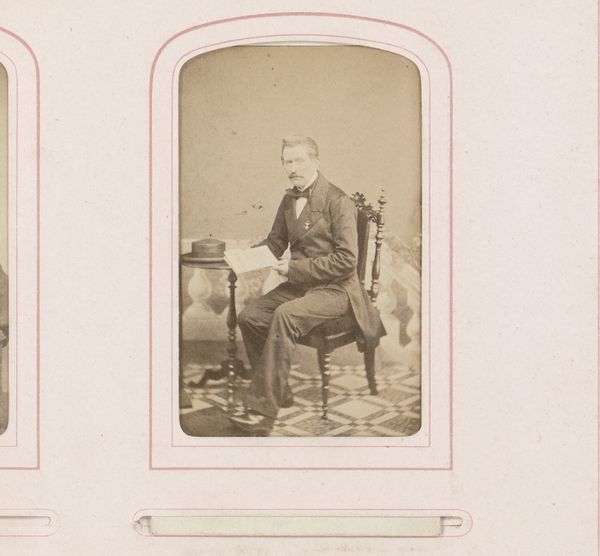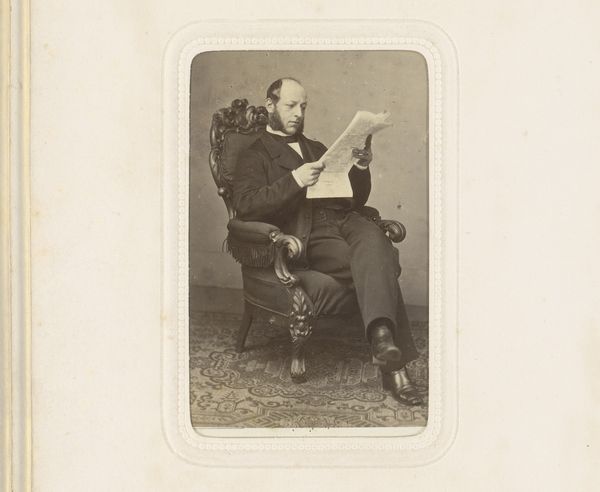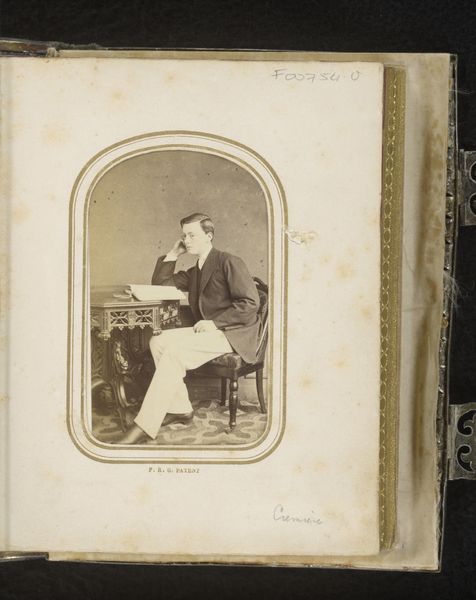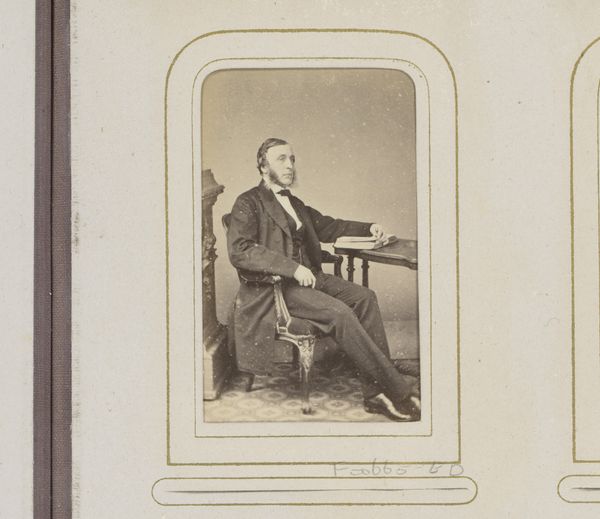
photogravure, photography
#
portrait
#
photogravure
#
photography
#
genre-painting
Dimensions: 5 5/8 x 4 15/16 in. (14.29 x 12.54 cm) (image)10 5/8 x 7 3/8 in. (26.99 x 18.73 cm) (sheet)
Copyright: No Copyright - United States
Editor: This is "Clarionet Player," a 19th-century photogravure by John E. Dumont, at the Minneapolis Institute of Art. It has a rather quiet mood, but there is a richness in the different textures captured through photography... What do you see in this piece, particularly thinking about its materiality? Curator: Looking at "Clarionet Player" as a materialist, I’m drawn to how photogravure, a printmaking process, elevates a seemingly mundane scene of a musician. Notice the textures--the rough fabric of his vest, the polished wood of the instrument, the grainy quality of the print itself. How do you think the photogravure process, which involves skilled labor and specific materials, affects our understanding of the subject matter? Does it alter its perceived social status? Editor: I guess I hadn’t thought about it that way. So, by taking a "common" subject and making a work that needs specific and sophisticated techniques, is the artist highlighting or elevating labor and the craft aspect? Curator: Precisely. It prompts us to consider the labor involved, not only in the creation of the artwork itself but also, by implication, the labor and the social standing of the musician in this photogravure. Dumont encourages us to consider not just what is represented, but *how* it is represented. This "how" being a direct function of labour. What kind of exchange do you see between those layers of meanings and materials, and, more specifically, how do they intersect with each other? Editor: Interesting, I’m starting to understand better. It's all layered. The photogravure highlights craftsmanship but depicts a working-class subject, kind of questioning social conventions through materials and production, right? Curator: Exactly. And thinking further, what can a material analysis tells us about class and representation in 19th-century art beyond the artwork itself? Editor: I learned so much from this piece and a fresh perspective that materials can convey different social messages. Curator: Agreed. Analyzing art through a material lens reveals connections between art, labor, and consumption.
Comments
No comments
Be the first to comment and join the conversation on the ultimate creative platform.
